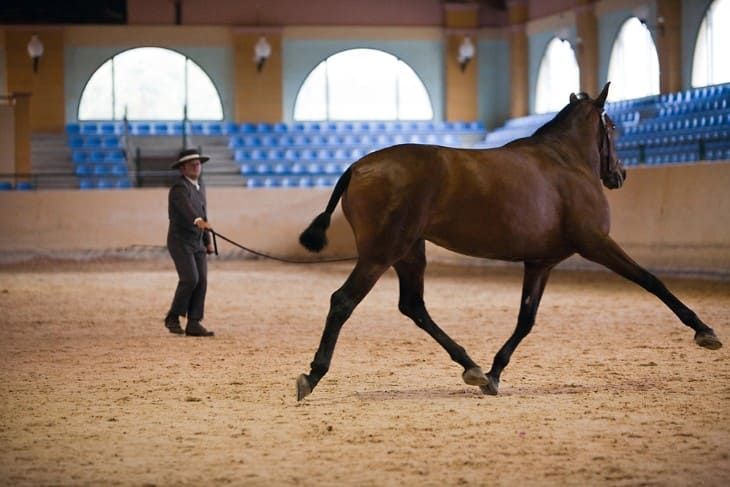- Race Cards and Their Importance in Horse Racing
- Decoding the Structure of a Race Card: Understanding Key Sections
- Unravelling Horse Statistics: Analysing Form, Class, and Ratings
- Jockey Performance Metrics: Assessing Skill and Track Record
- Mastering Race Conditions: Grasping Track Type, Distance, and Going
- Evaluating Trainer Influence: Impact on Horse Performance
- Unveiling Weight and Draw: How They Affect a Horse’s Chances
- Identifying Race Card Patterns: Spotting Trends and Insights
- Conclusion
Race Cards and Their Importance in Horse Racing
A race card is the central source of information for any horse racing event, offering a comprehensive summary about the races, horses, jockeys and relevant statistics on a race day. As a punter, reading and correctly interpreting the race card is the most vital skill you can cultivate, enabling you to make shrewd betting choices. Master its nuances like a pro handicapper, and you gain that slight edge to boost your likelihood of winning.
The anatomy of a race card reveals the dynamics at play. It presents details on race number, distance, names of horses and jockeys, recent form of horses, weight assignments, as well as race conditions pertaining to surface, class, obstacles and more. The assumed complexity of a race card often intimidates novice punters. However, learning the vocabulary of horse racing embedded within it helps unravel its hidden stories. A race card finally offers informed comparisons between contenders by bridging past performances to present circumstances.
The predictive nature of a race card cannot be underestimated. Use its insights judiciously to determine reasonable expectations on a horse's chances. Then craft your betting strategy by comparing its probability of winning against its starting price odds. The potential payout resulting from this Analysis can make a race card rewarding beyond measure for your wallet.
- The digitalization of race cards offers interactive features like horse watcher, paddock watcher, speed maps, articles, interviews and updates not possible in print race books.
- Race cards often have colour coding systems making key statistics easily identifiable - for example red for poor recent runs, amber for layoffs or green for good form.
- Race cards differ based on the host racetrack and can offer additional trainer statistics like strike rates, seasonal statistics based on time of year. This varies widely globally based on geography and types of races.
Decoding the Structure of a Race Card: Understanding Key Sections
The race card arranges information methodically into sections for easy access and understanding. Gaining familiarity with the typical layout is crucial before diving into the details present within. While race cards have some variation in structure based on publisher preferences, several key constituents remain consistent.
The top section captures the race details - number, distance, status, time of start and prize money helps quickly identify the race. The names of the horses, jockeys, trainers, owners follow, allowing you to note top connections. However the meat lies within details on recent form, rating, equipment, weight, draw and current odds. This data finally sets the stage for careful comparison between runners. Comments from connections or the odds compiler usually feature at the bottom along with a tip. Expert opinions provide additional context while tips should validate your own analysis.
Thus the format of a race card progresses from general details to specific statistics enabling informed decisions. Printed race cards often use colour, fonts, symbols, icons to ensure key information is distinguishable at a glance. Online race cards allow toggling between cards, excel downloads for analysis and integration with applications for ease of use. Understanding the language of a race card reveals the dynamics of the race so study sample cards before heading to the races.
- Use tools like TRACKER that apply algorithms to identify horses that fit betting criteria based on recent form and race statistics. This can simplify initial shortlisting.
- Bookmakers like BETFRED allow customizing online race cards to only show preferred horse statistics like recent finishes, days last run, best ratings at distance etc.
- Websites like RACINGPOST offer interactive race cards allowing you to access horse performance layovers, speed maps, insights from connections over several past runs just by clicking.

Unravelling Horse Statistics: Analysing Form, Class, and Ratings
The road to determining a horse's probability begins by studying three key performance pillars - its recent form, class it competes in and official rating provided by the local governing body. Form reveals actual finishes, class indicates quality of competition while rating provides a single numeric benchmark for comparison between runners.
Form lines use positions numbered 1 to 9 based on last finishes - 2152 for a horse placed 2nd, then 1st, 5th and 2nd. Letters instead of numbers indicate issues faced - like U for unseated, P for pulled up etc. Analysing form lines offers insights on consistency and suitability to race conditions. A horse in form tends to run as expected barring accidents. Similarly, class designated using letters from A to G indicates the calibre of past opposition. Dropping in class suggests meeting weaker opposition while moving up requires adjustment. Check if rating figures align with class and recent formlines to accurately reflect its capabilities.
Thus form, class and ratings together summarise raw past performance data into metrics that determine true ability. Yet horse racing thrives on beating perceived odds. So allow room for potential variance due to circumstances, riding change, equipment change etc. Let the horse's overall ability guide your estimate on its chances, not solely the numbers. The dividing line between winning and losing is often narrow - ensuring you end up on the right side is what successful punting means.
- Tools like BETFRED's Horse Wizard allow setting filters by form in last runs, best ratings, win percentages, age, career earnings etc to automatically flag selections likely to run well.
- Analysing form patterns for your selection and its opposition can reveal preferences for surface, good ability over certain distances, consistency in finishing positions that could repeat.
- Compare ratings between past runs to check if your pick is entering the race rated higher or lower than it has previously shown winning form. This signals whether it has further improvement to come.
Jockey Performance Metrics: Assessing Skill and Track Record
The jockey shares an almost symbiotic relationship with the horse - its pilot and partner rolled into one during a race. Their skill and experience helps guide the horse to optimise its potential by balancing pace judgement, tactical awareness and mindful riding. Hence analysis of jockey metrics provides additional context while assessing a horse's chances.
The key indicators to evaluate are win percentages, strike rates for trainers, number of career wins, record in big races and affinity to certain tracks. Punters gain confidence betting on consistently winning jockeys proven to eke out every last bit of energy from their mounts during a hard fought finish. Similarly an understanding of track layout, dimensions and surface nuances contributes to success for horse and jockey. Big race experience brings composure under pressure required while navigating traffic and rivals. Consider opportunities that arise from reputed jockeys switching rides or race-jockey combinations proven to excel together historically.
Thus the jockey metrics reinforce estimating the probability of your selection. Allow it to guide your horses' positioning pre-race and provide cues you can use during a race while watching live. Use a jockey switch riding your selection for the first time as an additional clue to confirm its readiness to run a career best effort. Finding that slight edge again comes down to joining the dots - with the jockey linkoften proving invaluable.
- Jockey statistics to consider - strike rates for individual trainers, seasonal win percentages, record riding certain horse pedigrees, recent return from breaks, use of race-day alleviations reducing weight carried further etc.
- Evaluating past race videos focusing on the jockey gives clues on where they positioned at start, how the pace was set, where cover was sought, the final run executed - all useful for next race.
- Websites like Racenet offer jockey statistics tracker across multiple tracks on various metrics like - career wins, season earnings, strike rates, number of multis etc.
Mastering Race Conditions: Grasping Track Type, Distance, and Going
The stage on which the equine drama unfolds plays a pivotal role in shaping the outcome. Track conditions marked by surface type, race distance and going underfoot test horse speed and stamina equation differently each time. Mastering the impact of these race dynamics is key to accurately assessing your selection's abilities and probability of victory.
Surface types in thoroughbred racing are mainly turf (grass), dirt, all-weather synthetic tracks and obstacles (hurdles/steeplechase). Horses built for speed excel on firm underfoot conditions and tight turf turns offering better traction for their long strides. In contrast, stamina rich stayers relish endurance testing dirt tracks that often get deeper or all weather tracks with a more even and consistent surface. Hurdlers take time to master assessing risk over obstacles. Check past performances on similar surfaces paying attention to wins, finishing times and closing speeds as indicators.
Distance again interplays with surface type to test horse versatility. Sprinters focus their talent over short sharp dashes while marathon runners peak over extended miles. Many excel when kept between sprint and stayer range at intermediate distances. Classifying your pick using a sprint - miler - stayer spectrum for each surface gives a more realistic expectation of its winning potential while comparing race fitness.
Thus an accurate forecast must balance the trip - surface - horse equation judiciously. Mastering this interplay is what transforms horseplayers rather than relying solely on post position, silks or breeding. Your betting strategy thenreflects the clarity this mastery brings.
- Race pace playing vital role, insight on whether front runners dominate certain tracks or closers have advantage due to surface kickback helps estimate leaders being caught.
- Analysing sectional timings rather than just finishing times alone offers detailed understanding of a horse's acceleration, pace judgement - valuable for future race planning.
- Certain tracks like Flemington (Melbourne Cup) have significant inclines testing horse endurance unlike others - past experience over the unique layout becomes essential.
Evaluating Trainer Influence: Impact on Horse Performance
The trainer functions akin to the horse’s conditioning coach, strategizing its racing calendar, designing fitness regimes and coordinating its support ecosystem to deliver winning performances come race day. Hence assessing a trainer’s record and statistics provides a crucial perspective into your selection's preparation and probability of victory.
Metrics to evaluate a trainer on include season win percentages, track specialisations, partnerships with jockeys and owners along with their skill in placing horses well in races to suit prevailing conditions and opposition. Trainers adept in their craft tailor bespoke training plans understanding each individual horse’s abilities. Check if your horse has previously excelled under the care of its current handler to reconfirm confidence in their methods. Some pedigrees perform best when paired with specific training patterns attuned to their physical and mental makeup.
Thus the trainer perspective validates or provides opposing evidence to your selection’s chances discussed earlier. Exploit positive observations like uplift in recent speed figures, new equipment introduced, jockey bookings that align with your estimates of its winning potential. The trainer ultimately controls vital conditioning factors - so let their record guide your expectations while assessing if the horse peaks when it truly matters on race day.
- Trainer statistics websites allow filtering by criteria like record at a chosen track, wins achieved with seasonal dose like Autumn runners, strike rates with race types, record with certain jockeys, win percentage with pedigrees etc.
- Evaluating past post-race comments by trainers gives clues on what aspects of horse development they focus more on - like strength building, lung capacity, race fitness etc. useful inputs while judging improvement.
- Insights from pre-race comments by trainers on expected pace, equipment changes, competition concerns, significant rider changes all provide additional context that can prove invaluable while interpreting your selection's true chances.

Unveiling Weight and Draw: How They Affect a Horse’s Chances
The twin considerations of weight assignments and an advantageous starting gate draw play a subtle yet significant role in competitive horse racing. Master both dynamics for additional clarity when estimating your selection's probability of notching a win.
Weight carried assigned by the official handicapper aims to level the playing field for each entrant based on demonstrated ability. Horses rated higher end up carrying more weight compared to rivals in an effort to reduce performance gaps. However each athlete has optimal weight bands where they perform at their best based on physique, training and favoured distance. Check your pick’s recent form lines for finishes carrying similar burdens - a good indicator of its ability to shoulder the expectation.
Further, tactical awareness of beneficial draw positions contributes to winning game plans. Analyse statistics on high percentage paths to victory based on gate positions for previous runnings. Certain tracks provide an edge to front runners able to take an early lead from an inside draw. For other layouts, the wider outside gates help by reducing traffic troubles. Use insights from the post position, distance and jockey style combination to estimate if the draw amplified or reduced probabilities of a winning outcome.
Thus details on weight and draw calculations provide additional context that helps clearly distinguish contenders with an appropriate chance to finish strongly or even surprise with an upset win at lucrative odds. Let the numbers guide your interpretation but also observe physical cues from the paddock and mounting yard on race day before finalising your wager.
- Use Excel to create your own horse race database that allows filtering selections by criteria such as weight carried, draw, number of days since last run, jockey change etc - trends which can reveal profitable betting patterns specific to tracks.
- Details like use of apprentice jockey claims, removal of horse shoes, application of tongue ties etc also lightly reduce carried weight further and are useful factors demonstrating intent from connections.
- Draw position impact reduces beyond certain distances as races settle after the first few furlongs. So more relevant for sprint races to maximise available start advantages to open early gaps.
Identifying Race Card Patterns: Spotting Trends and Insights
An expert punter progresses beyond reviewing individual contenders in isolation to analczing the entire race ecology on offer. This birds-eye perspective of scanning the race card reveals intriguing patterns - trends, new combinations and insights signalling value betting opportunities.
The patterns often center on trainer-jockey collusions, horses paired purposefully, class and pedigree preferences linked to race conditions or well weighted runners slated for improvement. Spotting these recurring partnerships, team dynamics or conditions where success thrives allows you to identify probability differentials to exploit.
For instance, a fancied runner dropping in class returning from a break with an ideal weight off a kind draw automatically triggers as worthy of wagering considerations. Similarly, a pedigreed horse stretching optimally to a suited distance ridden by a jockey booked specifically for the race tempts attention. Let pattern analysis narrow the contenders before evaluating individual metrics to reinforce selections.
Thus resembling a chess master assessing board formations, veteran punters spot patterns drawing on extensive memory banks cataloguing statistics. You can adopt this perspective too by maintaining notes, race databases and continuously expanding your Horse Racing education. Soon rewarding patterns will emerge that others fail to spot in the race card clutter.
- Free online tools like barrierdraws.com allow analysing statistics of horses placed per draw position historically over various distances - converting insights into potential bets.
- Software like Raceform Analysis offer customizable filters like days since last run, age, weight variations, draw analysis etc to mine databases, identifying conditions where horses perform best.
- Studying racing papers, videos post race weekends reveals interesting new race theories like position in running advantages, sectional upgrades in finishing speeds that offer clues to developing your own systems.
Conclusion
In conclusion, fully comprehending a race card is fundamental for thoroughbred racing success. Treat it as the compass guiding your betting decisions rather than simply starting prices alone. Allow layered insights from statistics, connections, pedigrees, metrics and patterns to shape analysis on true winning probabilities. View each runner as part of an interconnected ecosystem rather than in isolated snapshots. Develop this holistic perspective of the dynamics at play slowly by continually adding wisdom gleaned from every race day. Soon reading between the race card lines will feel almost second nature. With experience, you will gain conviction to wager more boldly when the numbers align in your selection’s favour. And those glorious moments where detailed race card analysis culminates in a victorious long shot win make all the effort truly rewarding both financially and intellectually!








